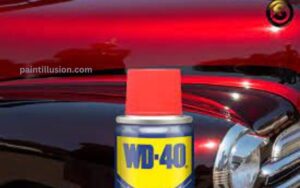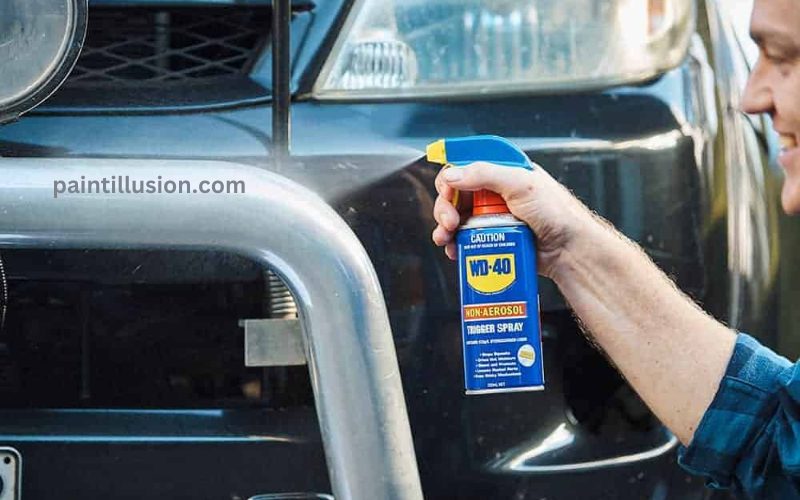As a car owner, one of your top priorities is to keep your vehicle looking pristine. The paint on your car not only enhances its appearance but also serves as a protective layer against various environmental factors. However, there are concerns about the potential damage that certain products, such as WD-40, could cause to car paint. In this article, we will explore the effects of WD-40 on car paint and debunk common misconceptions surrounding this issue.
Understanding the Effects of WD-40 on Car Paint
WD-40 is a popular multi-purpose lubricant that has a wide range of applications. While it is highly effective in loosening rusted parts and preventing corrosion, there is a prevailing belief that it can cause damage to car paint. It is important to understand that WD-40 is primarily composed of petroleum-based solvents and lubricants, which can potentially have adverse effects on the paint if used incorrectly.
However, when used properly and in moderation, WD-40 is generally safe for car paint. Its solvents can help remove contaminants like tar, bugs, and bird droppings without harming the paint underneath. It is crucial to follow the proper application technique to minimize any potential risks. Spray a small amount of WD-40 onto a soft cloth and gently wipe the affected area. Avoid spraying WD-40 directly onto the paint, as this can lead to overspray and potentially cause damage.
Common Misconceptions about WD-40 and Car Paint Damage
There are several misconceptions surrounding the use of WD-40 on car paint. One common belief is that WD-40 can strip off the protective wax or clear coat, leaving the paint vulnerable to damage. While it is true that excessive use or improper application of WD-40 can compromise the protective layers, using it sparingly and with caution will not harm your car’s paint.
Another misconception is that WD-40 can remove scratches from car paint. While it may temporarily mask minor scratches, it is not a permanent solution. In fact, excessive rubbing with WD-40 can further damage the paint and worsen the appearance of scratches. It is advisable to consult a professional for proper scratch repair and paint touch-ups.

Steps to Prevent Car Paint Damage
To ensure the longevity of your car’s paint and prevent any potential damage, it is essential to follow a few simple steps. Firstly, regular washing and waxing can provide a protective barrier against environmental contaminants. Use a mild car shampoo and a soft sponge or microfiber cloth to avoid scratching the paint. Applying a high-quality car wax periodically will further enhance the protection and shine of your car’s paint.
Secondly, parking your car in a shaded area or a garage can help shield it from the harmful effects of UV rays and extreme weather conditions. Direct sunlight can cause the paint to fade and deteriorate over time, so finding a covered parking spot is beneficial.
Lastly, be cautious when driving on gravel roads or in areas where there is loose debris. Small stones and debris can be kicked up by your tires and potentially chip or scratch your car’s paint. Maintaining a safe distance from other vehicles and driving at reasonable speeds can minimize the risk of such damage.
Alternative Solutions for Car Paint Maintenance
While WD-40 can be used sparingly for certain cleaning purposes, there are alternative products specifically designed for car paint maintenance. Waterless car wash sprays are a convenient option for quick cleaning and removing light dirt and dust. These sprays contain lubricants that encapsulate dirt particles, allowing them to be safely wiped away without scratching the paint.
Clay bars are another effective solution for removing stubborn contaminants that regular washing cannot eliminate. Clay bars work by gently pulling out embedded particles from the paint’s surface, leaving it smooth and clean. Follow the instructions provided with the clay bar kit to ensure proper usage and prevent any accidental damage.
Professional Car Paint Protection Services
For car owners who want to go the extra mile in protecting their vehicle’s paint, professional car paint protection services are available. These services often include the application of ceramic coatings or paint protection films. Ceramic coatings provide a durable and long-lasting layer of protection that repels dirt, water, and other contaminants. Paint protection films, on the other hand, are clear, self-healing films that offer excellent resistance against scratches, rock chips, and UV damage.
While these services require a financial investment, they provide peace of mind and can significantly extend the lifespan of your car’s paint. Additionally, they reduce the need for frequent waxing and polishing, making car maintenance more convenient.
How to Fix Minor Car Paint Damage
Despite our best efforts, minor paint damage can still occur. Fortunately, there are steps you can take to fix these issues and restore your car’s paint to its original condition. For small scratches or chips, touch-up paint kits can be purchased from your car’s manufacturer or reputable auto parts stores. These kits typically contain the exact color match for your car’s paint and come with detailed instructions on how to apply the paint correctly.
For deeper scratches or more extensive damage, it is recommended to seek professional assistance. Professional auto body shops have the expertise and equipment necessary to repair and repaint damaged areas seamlessly. Trying to fix major paint damage on your own may result in an unappealing finish and further deterioration of the paint.
Tips for Maintaining Car Paint Longevity
In addition to the preventive measures mentioned earlier, there are some additional tips to help you maintain the longevity of your car’s paint:
- Regularly inspect your car’s paint for any signs of damage or wear.
- Avoid using abrasive sponges or brushes when washing your car.
- Dry your car thoroughly after washing to prevent water spots.
- Avoid parking under trees that may drop sap or bird droppings onto your car.
- Use a dedicated bug and tar remover for stubborn contaminants.
By incorporating these tips into your car care routine, you can keep your vehicle’s paint looking vibrant and protect it from unnecessary damage.
Additional Factors That Can Damage Car Paint
While WD-40 may not pose a significant threat to your car’s paint when used correctly, there are other factors that can cause damage. Acidic substances, such as bird droppings, tree sap, and road salt, can eat away at the paint if left untreated for an extended period. It is crucial to remove these substances promptly using appropriate cleaners or seeking professional assistance if necessary.
In addition, frequent exposure to extreme weather conditions, including high heat, freezing temperatures, and heavy rainfall, can accelerate paint deterioration. Regular maintenance and protective measures can help mitigate the effects of these factors and preserve your car’s paint for years to come.
Conclusion
In conclusion, when used properly and in moderation, WD-40 is generally safe for car paint. Understanding the correct application technique and debunking common misconceptions can help alleviate concerns about potential damage. However, it is important to prioritize regular car paint maintenance, including proper washing, waxing, and protection, to ensure the longevity and appearance of your vehicle. By following the recommended steps and considering alternative solutions, you can keep your car’s paint in excellent condition and enjoy a vehicle that looks as good as new for years to come.
CTA: To learn more about car paint maintenance and protection, visit our website or schedule a consultation with our car care experts.


I enjoy the efforts you have put in this, regards for all the great articles.